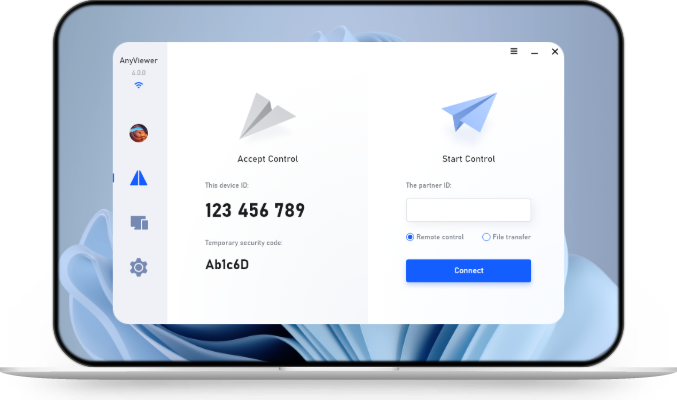How to Transfer Large Video Files from Computer to Computer
This post introduces how to transfer large video files from computer to computer. There are five methods mentioned. Read it carefully and choose the one you like best.
How do I transfer large video files from PC to PC?
With the proliferation of high-quality video equipment, the democratization of video production, the rise of AI in creative fields, and the surge in video conferencing and webinars due to the pandemic, managing and transferring large video files has become a common challenge. Whether you're a professional videographer or someone who primarily uses a computer over a mobile device, sharing hefty video files can be cumbersome.
Fortunately, there are several effective solutions available to help you send large video files without concerns about their size. Consider these five options for hassle-free video transfers.
How to transfer large video files from computer to computer [5 ways]
Let's dive into how to transfer large video files from computer to computer in the following five ways.
Way 1. Professional large video file transfer tool AnyViewer
AnyViewer is a robust file transfer tool for transferring large video files, designed for professional use. Its platform enables efficient and secure file transfers, accommodating sizable media with ease. Leveraging advanced technology, AnyViewer ensures that your large video files are sent quickly and reliably, making it the best way to send large video files between computers.
AnyViewer offers several key features for large video file transfers:
- Maximum transfer speed of 10 MB/s.
- Ability to handle up to 5 simultaneous file transfers.
- Unlimited number of files can be transferred at once.
- Individual file size supports up to 1 TB.
Download this FREE file transfer software and follow these steps to learn how to transfer large video files from computer to computer free:
Step 1. On your local computer, go to the login section and click "Sign Up."
Step 2. After logging in to AnyViewer, your device will be automatically connected to your account.
Step 3. Log in to the same account on the remote computer.
Step 4. On your local computer, select the remote device you wish to transfer video files to, then click "File Transfer."
Step 5. A File Transfer dialog box will appear. Transfer video files by selecting them and clicking the arrows, or double-click the files you want to send.
For faster transfer speeds, consider upgrading to a Professional or Enterprise plan.
Way 2. Transfer long videos using a cloud storage solution
Sharing large video files through cloud storage services is simple. You can use a web interface or sync folder to upload your video file, then generate a shareable link for email, messaging, or a website. Platforms like Google Drive, Microsoft OneDrive, Apple iCloud, Adobe Cloud, and Dropbox all provide this functionality, making it a familiar and easy process.
However, there's a catch: storage limits. Services like Dropbox offer only a few gigabytes of free space, and Google Drive gives you 15GB before you have to pay. If you're frequently transferring large video files and looking to save money, cloud storage may not be the most cost-effective option.
Way 3. Share long videos using physical media storage
It's important to mention physical media for file transfers. Whether you're sending a file across the globe or just across the room, using a USB stick or an external hard drive can be a practical option for transferring large video files within the same area. This method is quick, simple, and secure, especially since you can oversee the transfer personally.
However, there are some drawbacks. Transferring large files via physical media can sometimes be slower than digital methods and may incur additional costs. Additionally, if the file gets corrupted during the transfer or on the recipient's device, you'll need to redo the process with the external drive.
Way 4. Send large video files using Secure FTP (SFTP)
Imagine an easy transfer process where you simply upload a file to a secure server, and anyone with the right credentials can download it from there—that's the essence of SFTP. The secure server acts as an intermediary, keeping the file safe until it's needed. SFTP is reliable, secure, and customizable, but it does have its drawbacks.
It's an older technology, often seen as outdated, and setting it up can be cumbersome. Training users, managing SFTP credentials, and configuring security can be a hassle. Additionally, SFTP is not optimized for high-speed transfers or large files, such as 4K video or 100GB uploads. For such hefty files, SFTP may become more problematic than helpful.
Way 5. Swift large video file transfers with UDP
UDP, or User Datagram Protocol, offers incredibly fast file transfers, potentially quicker than physically delivering a large video file. This speed comes with some notable trade-offs, however. Unlike TCP, which is utilized by web-based file transfer services such as Smash or WeTransfer, UDP does not include mechanisms for connection acknowledgments or network congestion control.
As a result, UDP-based transfers consume more bandwidth and can be costly. For example, Aspera Cloud, a service relying on UDP, starts at $0.95 per GB, not including additional storage fees. While it can navigate corporate firewalls and deliver files quickly, this efficiency comes with higher expenses and bandwidth consumption.
The bottom line
In summary, transferring large video files from computer to computer can be straightforward with the right method. Choose from tools like AnyViewer for efficiency, cloud storage for convenience, or physical media for simplicity. AirDrop and Nearby Share are great for quick transfers if devices are compatible. By selecting the method that best fits your needs, you can ensure an easy and effective file transfer.

